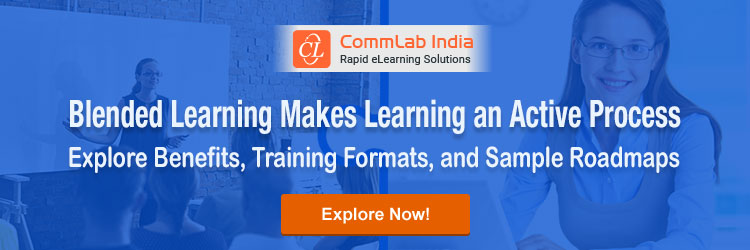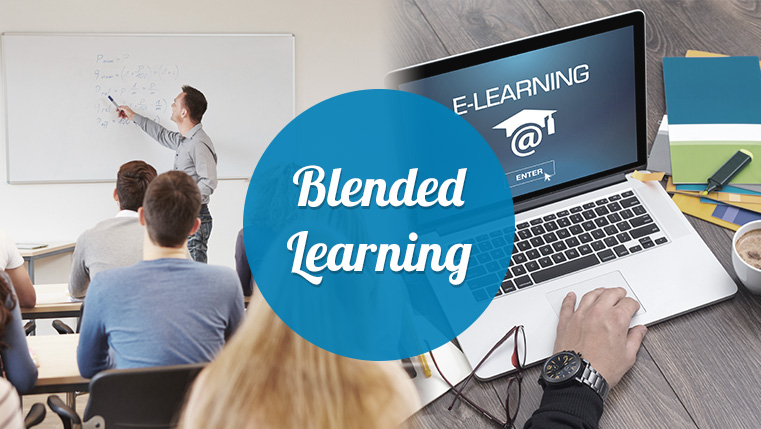Blended or hybrid learning is more than just combining different types of training. It is a strategy where different formats and delivery methods are used to address different stages in the learning journey to maximize learning. It can also be used to provide learning bites at predetermined intervals to reinforce learning.
Blended Learning= In-person learning experiences + online learning (including virtual ILT sessions) + performance support
Whilemicrolearning,virtual classrooms, social and mobile learning, and performance support can all be included in blended learning, the challenge is to create the best solution for each learning requirement. And this is where a job-task inventory matrix can come in handy. A job-task inventory will also help in the selection of various digital assets that can be used at regular intervals to reinforce knowledge.
Watch this webinar for insights on the job-task inventory.
Formats of Blended Learning
A well-designed blend of different learning delivery methods can help organizations provide high quality training while also providing learners a high degree of flexibility. Learners will be more engaged going though various types of instructional material.
Use Blended Learning to Prop the Forgetting Curve
We can negate the effect of the Forgetting Curve to a great extent by propping up learning at regular intervals using a wide variety of digital and in-person learning formats.
Good hybrid learning strategies enable the trainer to assess learner needs to improve performance.Blended learningoffers self-paced online learning while retaining the human element of the classroom. So, it’s a definite win-win situation.
Here are 6 formats that can be included in blended learning:
- Live Formats
- Social Learning
- Virtual Collaboration – Synchronous and Asynchronous
- Self-Paced Learning
- Performance Support System (EPSS)
When to Blend
- When there is a lot to share and very little time
- When you need to coordinate between multiple stakeholders and learners
- When you have geographically dispersed employees
- When you need to train employees often
Superimposing Learning Elements on the Forgetting Curve
A typical graph of theForgetting Curveshows that almost half of the newly acquired knowledge is lost soon after training – unless reinforced. With blended learning, different formats can be used at regular spaced intervals to improve recall and on-the-job application – thereby beating the Forgetting Curve.
UsingeLearning、microlearning资产或性能支持ls at regular intervals helps reinforce learning just when learners start to forget what they have learned.
We can’t eliminate the Forgetting Curve, but we can nullify its effects to a large extent by propping up learning at regular intervals using a wide variety of digital and in-person learning formats that we have at our disposal.
Wrapping Up
Delivering each topic in the most appropriate learning format promotes better learning and, as a result, retention. For instance, classroom training with can be used to introduce employees to a new software and eLearning simulations can be used to train them on how to actually use the new software. This way, the learning objectives for instructor-led training and eLearning are met efficiently while remaining relevant to the learner.
Aside from these benefits, blended learning has the potential to promote collaborative learning not only in the classroom or online training sessions, but also through online discussion forums.






